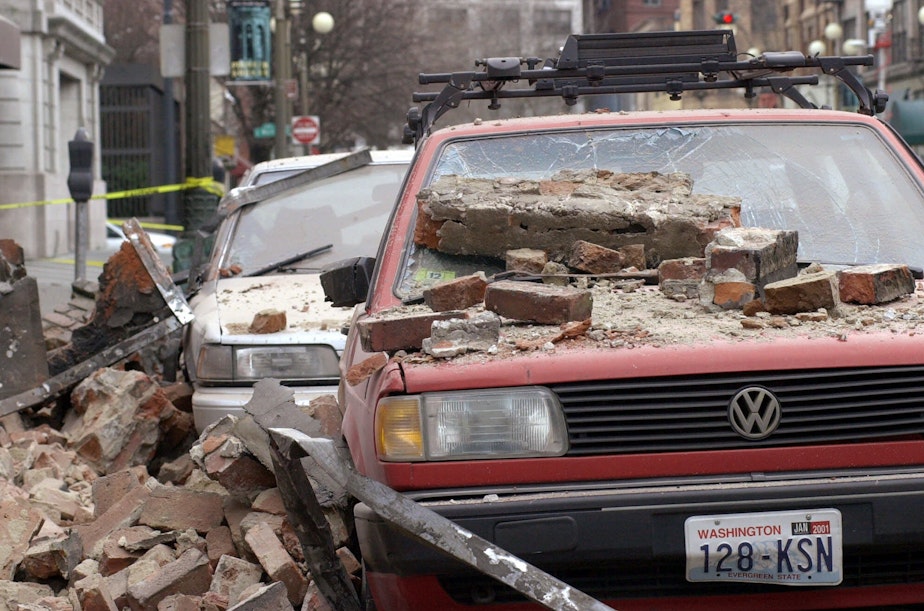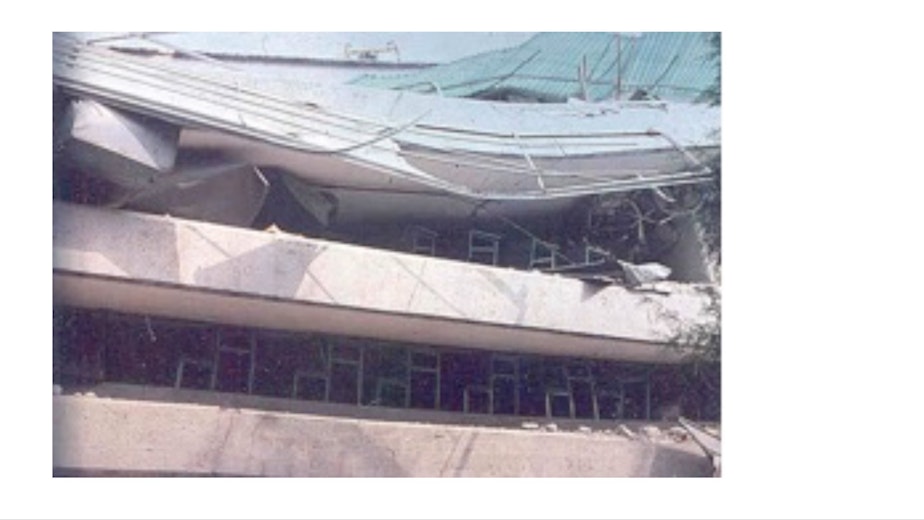Don’t stand in the door frame and other (updated) earthquake response tips

A big earthquake drill is taking place across Washington state on Thursday, and even the world. KUOW listeners asked what to do when the ground shakes for real.
Here’s why you don’t want to run out of a building during an earthquake.
- You could fall.
- Things could fall on you.
- You’re safer staying put under a sturdy desk or table if the building collapses (which it probably won’t).
Instead, here’s what you should do:
Drop to your hands and knees and shield your head with your arms. If you can, crawl to a sturdy desk or table and hold on.
Sponsored
Do NOT go to a doorway, said Washington Emergency Management Division earthquake and volcano program coordinator, Brian Terbush.
That’s a debunked myth.
“Doorways frequently have doors in them that can swing around that can hit you,” Terbush said. “It’s not any more sturdy; it’s not a safer place to be and trying to get there is more dangerous than staying where you are.”
Don’t run out of the building during the shaking either.
“If the ground is shaking side to side it can quickly throw you to the ground,” he said.
Sponsored
Or you could be hit by a falling object.
“But what about all those unsafe, old brick buildings that are especially susceptible to earthquakes?” you may ask. “What if I work or live in Pioneer Square or the Chinatown-International District where those so-called unreinforced masonry buildings proliferate? Shouldn’t I try and flee then?”
No.
You’re much more likely to be hit by bricks falling off unreinforced masonry buildings or shattered glass from the windows, Terbush said. Being under a table is much safer, even if your building collapses, which, Terbush says, it probably won’t.
“Even if the building does collapse, being under something sturdy is still going to be a good place to be,” Terbush said, citing the below photo of desks holding up the ceilings of their building during an earthquake in Mexico in 1985.
Sponsored

Once the shaking stops, evacuate to high ground if you’re in a tsunami zone. Check these maps to see if that’s you.
On Thursday, over a million people in Washington state plan to participate in the Great ShakeOut earthquake drill.
We have a good chance of experiencing a big earthquake in our lifetime, said Corina Forson, chief hazards geologist at the Washington State Department of Natural Resources.
So, we need to get prepared, she said.
Sponsored
“It’s just like every time you get into your car, you put on your seat belt,” Forson said. “So I think of earthquakes in a similar fashion.”
There’s a 10 to 15 percent chance that we could experience a Cascadia Subduction Zone earthquake that could reach a Magnitude of 9.0, known as “The Big One,” in the next 50 years, Forson said.
We have an even higher chance of experiencing a Magnitude 6.5 or greater earthquake, like what happened in 2001 — 84 percent chance, according to the U.S. Geological Survey.




